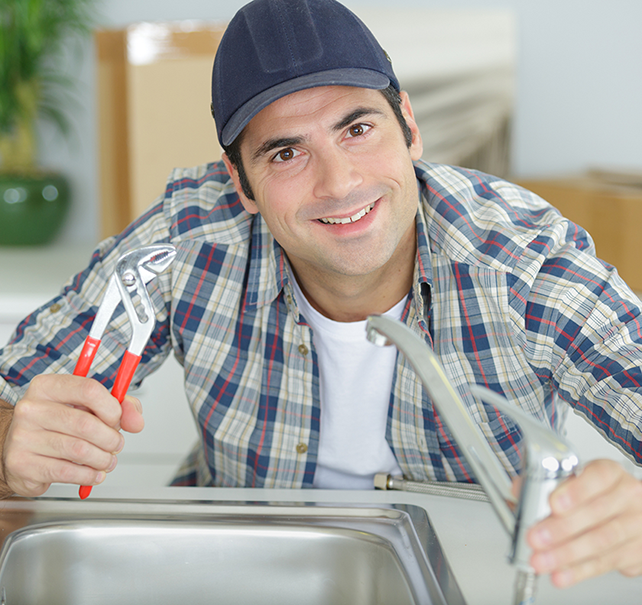Plumbing repairs average $175 to $450, but major plumbing issues can cost a lot more. Taking care of your plumbing can prevent common issues, such as leaks and clogged drains, that require you to call a plumber. Most of the plumbing maintenance tasks are simple enough for anyone to handle on their own. Doing regular plumbing maintenance can keep you from needing to do a quick “plumbers near me” search for an emergency plumber. When it gets to the point of needing emergency repairs, you’re likely looking at water damage and a lot higher price tag on your repair bill. Preventing issues and catching them early is key. Keep reading to learn about the plumbing maintenance tasks you should be doing.
Look for Water Leaks
 Leaks account for almost 1 trillion gallons of wasted water each year in the United States. On average, a household with leaks can waste almost 10,000 gallons of water. Finding and fixing those leaks protects natural resources and can save you on your water bills. One way to see if your home has a leak somewhere is to stop using water for one to two hours. Look at your water meter before and after that period. Changes in the meter mean that water is still running somewhere, which likely means you have a leak. You can inspect any visible plumbing components for leaks at any time. Check faucets and any exposed pipes, such as those under sinks and in unfinished areas, such as basements and crawl spaces. Look for signs of water below the pipes, such as puddles or mold. In finished areas, leaks often aren’t easy to spot until you notice water stains on walls or ceilings. You might also see or smell mold or mildew from the excess moisture. Leaks often happen where pipes connect, so look at those areas especially close. Faucets often leak when the washers and gaskets inside wear out. If you discover a leak, call a plumber to have the problem fixed properly if it’s not something minor that you can handle yourself. Don’t forget to look for leaks in and around your appliances that use water, including dishwashers, washing machines, and refrigerators with built-in icemakers and water dispensers. It could be a simple connection issue or a leaking hose that needs to be replaced. Hoses eventually deteriorate and can develop cracks. While you’re looking for leaks, check out the condition of the pipes and hoses in your home. Components can corrode or crack over time. Even if they’re not leaking yet, they could be close to leaking if they show signs of deterioration.
Leaks account for almost 1 trillion gallons of wasted water each year in the United States. On average, a household with leaks can waste almost 10,000 gallons of water. Finding and fixing those leaks protects natural resources and can save you on your water bills. One way to see if your home has a leak somewhere is to stop using water for one to two hours. Look at your water meter before and after that period. Changes in the meter mean that water is still running somewhere, which likely means you have a leak. You can inspect any visible plumbing components for leaks at any time. Check faucets and any exposed pipes, such as those under sinks and in unfinished areas, such as basements and crawl spaces. Look for signs of water below the pipes, such as puddles or mold. In finished areas, leaks often aren’t easy to spot until you notice water stains on walls or ceilings. You might also see or smell mold or mildew from the excess moisture. Leaks often happen where pipes connect, so look at those areas especially close. Faucets often leak when the washers and gaskets inside wear out. If you discover a leak, call a plumber to have the problem fixed properly if it’s not something minor that you can handle yourself. Don’t forget to look for leaks in and around your appliances that use water, including dishwashers, washing machines, and refrigerators with built-in icemakers and water dispensers. It could be a simple connection issue or a leaking hose that needs to be replaced. Hoses eventually deteriorate and can develop cracks. While you’re looking for leaks, check out the condition of the pipes and hoses in your home. Components can corrode or crack over time. Even if they’re not leaking yet, they could be close to leaking if they show signs of deterioration.
Check for Toilet Leaks
Toilets are often the cause of leaks in homes. An easy way to check for toilet leaks is to put a few drops of food coloring in your toilet tank. Give it an hour or two. Check the bowl of the toilet to see if the food coloring has made its way into the water there. If so, you have a leak. An easy way to fix this is by replacing the flush seal that you can buy at any home improvement store.
Check Shut-Off Valves
All home plumbing systems have shut-off valves to kill the water supply. These shut-off valves are crucial if you have a plumbing emergency or major leak. You can turn off the water supply before your entire home becomes flooded. Your home has a main shut-off valve, often where the water supply comes into your home. You can use it to shut off all of the water to the home. Individual plumbing fixtures, such as toilets and sinks, also usually have their own shut-off valves. This lets you cut the water to just that fixture if you need to do maintenance on it or the leak is confined to that area. As part of your yearly plumbing maintenance, look for all of the shut-off valves in your home so you know where they’re located in case of a plumbing emergency. Test each of the valves to ensure they turn easily and work properly. If they don’t turn, don’t work, or leak when you turn them, call a plumber to have the parts repaired or replaced.
Test the Water Pressure
If you have a sudden drop in water pressure, you likely notice it right away. This can be due to large demand from other faucets, or it could be due to a plumbing issue. Most homes have a pressure regulating valve that can fail over time or can have debris inside of it. This valve regulates water pressure coming from the street pipes and reduces the water pressure to a safe level for your home. However, the water pressure can slowly decrease over time, due to things such as corroded or clogged pipes and buildup in your faucet heads. If you notice lower pressure in just one faucet, look for clogs in those specific areas. If you can’t find the cause of the lower water pressure, have a plumber inspect the system for you.
Inspect Your Water Heater
A major plumbing fixture that you want to keep running is your water heater. While you might not feel comfortable messing around with the water heater too much, you can look for signs that it’s getting older or has an issue that needs to be repaired. Start by looking at the floor around the water heater to check for puddles and leaks. Check the pipes and the unit for additional leaking or moisture. Rusting and strange noises, such as rattling or banging, coming from the unit can also be a sign of an issue. If you have a traditional tank water heater, draining it once per year can help remove sediments. The sediments force the water heater to work harder, which raises your energy bills and can shorten the life of your water heater. If you don’t feel comfortable draining the water heater yourself, schedule a yearly plumbing maintenance visit with your plumber to handle the task and look for other issues.
Insulate Plumbing Components
Insulation on exposed parts of your plumbing system can help protect them and allow them to work more efficiently. Insulating your exposed pipes, especially those in cold areas or near exterior walls, can prevent the water from freezing. Insulation on your hot water pipes helps keep the water heated by preventing heat loss, which can lower your utility bills. Foam pipe wrap or pipe sleeves fit perfectly around the pipes for easy installation. The sleeves have a slit along one side to slip over the pipes easily. Use duct tape to secure the sleeves. Insulating your water heater can increase its energy efficiency. Insulation can reduce standby heat loss by 25 to 45% if your water heater tank feels warm to the touch. Water heater insulating blankets easily wrap around the tank for quick insulation.
